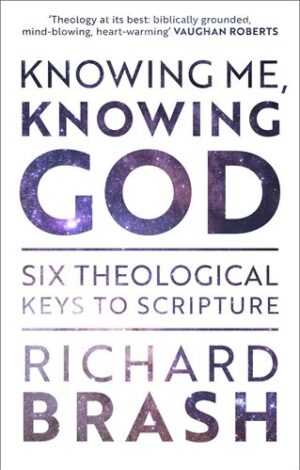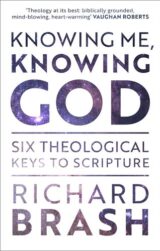Summary
The second theological ‘key’ to Scripture introduced in this book is: God has made us like himself. This is not a contradiction of the first key: rather, it sets up an ‘antinomy’, and both truths must be maintained. Each human being is the image of God. That is, above all, what sets man apart from other creatures. This understanding of man is known as the ‘essential’ sense of the image. We can understand what the Bible means by looking at the ancient Near Eastern background, in which we find foreshadows of biblical truth. As God’s ‘image’ man is created as a king or vicegerent, placed in God’s cosmic temple as the ‘face’ of God to the world.
God has established a creaturely similarity between man and himself. Human beings therefore represent God to the world as his images. In theological terms, man is an analogue of God, or an ectype of God’s heavenly archetype. Human beings are created to reflect, resemble, represent, and relate to, God. As the essential image of God, man cannot ‘lose’ this status, even in the fall. Uniquely, Jesus Christ is the image of God by sharing in the divine essence. This qualifies him to be our Saviour.
God is near because of the likeness he has established with us in creation. The theological key God has made us like himself has implications for our worship, our self-understanding and moral worth, our salvation, our evangelism, and our interpretation of the Bible.
Aims of study
- To recognise that God is immanent as well as transcendent.
- To understand what it means for you to be the essential image of God.
- To understand yourself as the analogue and ectype of God, created with a certain type of similarity to the Creator.
- To see that in the essential sense, it is not possible to ‘lose’ the image of God.
- To recognise Jesus Christ as the unique image of God, by virtue of his sharing in the divine essence.
- To apply the self-understanding and God-understanding outlined in this chapter to various practical areas of our lives, including, for example, our worship, evangelism, and Bible reading.
Starter questions
- Have you ever visited a pagan (non-Christian) temple or shrine? What messages did it convey about the god or gods enshrined there, and how human beings should relate to them? [If you have never visited a pagan place of worship, you could imagine what that might be like based on what you have heard or read, or you could look online.]
Questions to review understanding and for discussion
- How does the ancient Near Eastern background help us understand the biblical concept of the ‘image’ of God? (pp. 46-48)
- What is the meaning of the two vertical lines in Van Til’s diagram of God and creation in relationship? (figure 2.2, p. 49)
- Compare figures 2.3 (p. 50) and 2.4 (p. 51). What are the key similarities and differences? What is the significance of the diagrams for understanding what it means to be the image of God?
- Theologian Alexander Schmemann has labelled humankind as first Homo adorans (man as worshipper) and only secondarily Homo sapiens (man as thinker) (p. 50). What does this mean, for both the Christian and the non-Christian?
- What other ways does God relate us, according to Scripture, apart from the ones that Brash lists on p. 53?
- ‘Everything we do (except sin), we do because in some sense God does it first.’ (p. 55, and see also the footnote) Do you agree? How might this affect the way you understand your vocation/calling in God’s world?
Bible passage: Genesis 1:26-31
- Brash argues that it is better to translate Genesis 1:26 as ‘Let us make man as our image’, rather than ‘Let us make man in our image’ (ESV). Why? What is the difference in meaning?
Suggested application questions
- Do you know anyone who thinks of God as being like the ‘god’ of Deism? (p. 60) How might you begin to communicate to them some of what you’ve learned in this chapter?
- Think back to a church service you have attended (or perhaps helped to lead) recently. What messages did it give about who God is and how we should relate to him? What about the messages about who we are in relation to God? How do these messages relate to the themes you have studied in this chapter? Might you approach a service any differently on the basis of what you’ve read and talked about?
- The eternal God is near us (Acts 17:27-28). What difference should that make to the way you live this week?
For further study
A good introduction to the doctrine of humanity (or ‘theological anthropology’) is Anthony Hoekema, Created in God’s Image (Grand Rapids: Eerdmans, 1994). This book is mostly balanced and convincing. However, because Hoekema persists in using the language of humankind’s creation in the image of God, he continues to give the impression that the ‘image of God’ is something either extrinsic to (outside) both God and man, or else intrinsic to God, but separate from man himself: a sort of (quasi-Platonic) ‘idea’ in God’s mind according to which man corresponds or in the likeness of which man is fashioned. As I argued in KMKG, it is better to understand Scripture as teaching that man is created as the image of God. This point aside, Hoekema’s book is still well worth reading.
If you are still to be convinced by my argument about the image, you might want to look at some of the books mentioned in the footnotes for this chapter, especially Jeffrey J. Niehaus, Ancient Near Eastern Themes in Biblical Theology (Grand Rapids: Kregel, 2008), and Meredith G. Kline, Kingdom Prologue: Genesis Foundations for a Covenantal Worldview (Eugene, Ore.: Wipf & Stock, 2006). I don’t agree with Kline’s specific understanding of Genesis 1:26 as God’s address to his ‘heavenly council’. That small point aside, his book is excellent and thought-provoking – if quite high-level – theological reading of Scripture.


